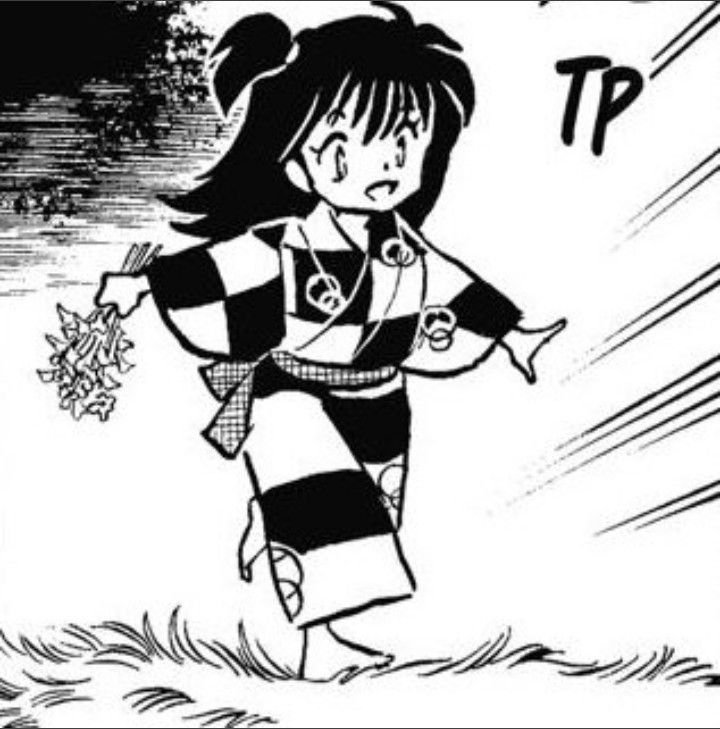

Rin

|
りん
|
|
|---|---|
| Personal Description | |
| Nihongo | りん |
| Biographical information | |
| Age | 9-10 (InuYasha) |
| Status | Alive (resurrected) |
| Physical information | |
| Species | Human |
| Gender | Female |
| Height | 130 cm |
| Eye color | Brown |
| Hair color | Black |
| Skin color | Fair |
| Physical information | |
| Abilities | Survival skills |
| Debut | |
| Manga Debut | Chapter 129 |
| InuYasha Anime | Episode 35 |
Rin
Japanese Name:りん (Rin)
Role:Traveling companion of Sesshōmaru
Species:Human
Family:Orphaned, no known family connections
|
Émile Durkheim
|
|
|---|---|
| Born |
David Émile Durkheim
15 April 1858 Épinal, France
|
| Died | 15 November 1917(aged 59)
Paris,France
|
| Nationality | French |
| Alma mater | École Normale Supérieure |
| Known for | Sacred–profane dichotomy Collective consciousness Social fact Social integration Anomie Collective effervescence |
| Scientific career | |
| Fields | Philosophy, sociology, education, anthropology, religious studies |
| Institutions | University of Paris, University of Bordeaux |
| Influences | Immanuel Kant, René Descartes,Plato, Herbert Spencer,Aristotle, Montesquieu, Jean-Jacques Rousseau, Auguste Comte. William James, John Dewey, Fustel de Coulanges, Jean-Marie Guyau, Charles Bernard Renouvier, John Stuart Mill |
| Influenced | Marcel Mauss,Claude Lévi-Strauss, Talcott Parsons, Maurice Halbwachs, Jonathan Haidt, Lucien Lévy-Bruhl,Bronisław Malinowski, Fernand Braudel, Pierre Bourdieu, Charles Taylor, Henri Bergson, Emmanuel Levinas, Steven Lukes, Alfred Radcliffe-Brown, E. E. Evans-Pritchard, Mary Douglas, Paul Fauconnet, Robert N. Bellah, Ziya Gökalp, David Bloor, Randall Collins, Neil Smelser[1] |
Appearance
Rin is a young girl with dark hair, usually seen wearing a simple kimono. Despite her difficult past, she has a bright smile and an optimistic demeanor, which are some of her defining characteristics.

With youthful energy and a carefree spirit, Rin runs with a smile, capturing her adventurous nature and unwavering trust in those she holds dear.
Personality
Rin is cheerful, innocent, and compassionate, showing remarkable resilience and bravery despite her young age and the traumatic events she has endured. Though initially mute due to the trauma of losing her family, Rin regains her voice after meeting Sesshōmaru, who becomes her protector. Her loyalty and courage are profound, as she accompanies Sesshōmaru without fear, even though he is a powerful and often indifferent daiyōkai.
Background and Story
Rin’s life was marked by tragedy at a young age. She was orphaned and left alone to survive in a hostile world, finding herself ostracized by her village for reasons unknown. After her tragic circumstances, she encountered Sesshōmaru, who had been severely injured during a battle. Despite his cold demeanor and lack of empathy toward humans, Rin was drawn to him and offered him food and aid, even though he initially refused her kindness. When she was later attacked and killed by wolves, Sesshōmaru used the Tenseiga, a sword that can revive the dead, to bring her back to life. This act of compassion marked the beginning of her journey with Sesshōmaru as his companion.
Relationship with Sesshōmaru
The bond between Rin and Sesshōmaru is profound and complex. Though Sesshōmaru originally held little regard for humans, Rin’s kindness and loyalty began to break through his cold exterior, allowing him to display unexpected moments of compassion and protectiveness. Sesshōmaru’s decision to revive Rin was an uncharacteristic act of mercy that subtly transformed him, leading him to care for her deeply over time. As a result, Rin became an essential part of his life, often accompanied by Jaken, Sesshōmaru’s imp-like servant. Sesshōmaru’s guardianship of Rin also motivates him to take actions to ensure her safety and happiness, even when it requires setting her apart from him to live a more stable life.
Influence on Sesshōmaru’s Development
Rin’s presence has a transformative effect on Sesshōmaru, helping him to evolve beyond his initial disdain for humans and inspiring him to embrace qualities of compassion, responsibility, and a sense of family. Sesshōmaru, once purely focused on power and independence, learns the value of protecting someone vulnerable and cherishing bonds with others through Rin. This relationship allows him to connect with his humanity, influencing his growth and changing his outlook.
Trivia
Trivia:
★ Rin’s name means “dignified” or “companion,” reflecting her role as a steadfast companion to Sesshōmaru despite the disparities in power and race.
★ Rin’s bond with Sesshōmaru is unique in that it defies typical feudal societal norms, bridging the divide between humans and daiyōkai.
★ Sesshōmaru’s use of Tenseiga to revive Rin demonstrates the sword’s purpose to heal rather than destroy, highlighting themes of life and compassion within Sesshōmaru’s journey.